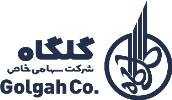Polyacrylamide in Iran (PAM) – anionic, cationic, and nonionic
CAS Number: 9003-05-8
PubChem: 6579 (monomer)
Iran HS Code: 39069000
The word polyacrylamide is a generic chemistry term, referring to a broad class of compounds.
Polyacrylamide is a polymer formed from acrylamide (a compound with the molecular formula C3H5NO) subunits. The polymer structure of PAM is (-CH2CHCONH2-).
There are hundreds of specific polyacrylamide formulations. The polymer can be synthesized as a simple linear-chain structure or cross-linked, typically using N,N’-methylenebisacrylamide. In the cross-linked form, the possibility of the monomer being present is reduced even further. Cross-linked polymers are water absorbent but are not water soluble. Water-soluble polyacrylamide (PAM) have little if any cross-linking and the molecules, when dissolved in water, are nominally “”linear”.
Polyacrylamide (PAM) is most often used to increase the viscosity of water (creating a thicker solution) or to encourage flocculation of particles present in water.
Polyacrylamide can be supplied in a powder or liquid form, with the liquid form being subcategorized as solution and emulsion polymer.
PAM can be used in municipal wastewater treatment. In industrial wastewater treatment, the polymers and coagulants are used extensively for a wide variety of industrial processes involving paper, petrochemical, electroplating, textiles, oilfield chemical, food, pharmaceutical, leather, breweries wineries, and slaughterhouses.
PAM is a synthetic chemical that can be tailored to fit a broad range of applications.
– Cationic Polyacrylamide – CPAM
– Anionic Polyacrylamide – APAM
– Noionic Polyacrylamide – NPAM
– Zwitterionic Polyacrylamide – ZPAM
– Anionic,Cationic, Nonionic emulsion Polyacrylamide – EPAM
Users
- Municipal, Industrial, and Mines Waste Water Treatment Plants
- Oil, Gas, and Petrochemical Industries
- Power Plants
- Oil Drilling and Transportation
- Pulp & Paper Mills
- Mines: Sand, Zinc, Iron, Copper, Aluminum, and etc.
- Agriculture and Environment
- Food and Drug
- Textile and Tanning
- Slaughterhouses
Applications
- Municipal Waste Water Treatment
- Industrial, Oil&Gas, Petrochemical, Pulp&Paper, Textile, and Plating Waste Water Treatment
- Mines Process Water Recycling and Cost Reduction
- Decreasing Disposed Tailing Volume
- Recycling Minerals and Process Water in Mines
- Oil Recovery Enhancement
- Enhancing Drilling Fluid Performance: Well Collapse Prevention, Bit Lubrication and Cooling
- Friction Reduction in Oi Transportation
- Improving Uniformity and Softness of Paper
- Increasing Efficiency and Reducing Cost of Paper Production
- Soil Stabilization and Conditioner
- Increasing Water Infiltration Rate of Soil
Features
- Strong Coagulant Agent
- Environmental Friendly
- Non-decomposable in Nature (into toxic monomers)
- No Poisoning and Side Effects
- Variety of Characteristics and (Chemical & Physical) Behaviours
Advantages
- Variety of Molecular Weight and Ionic Charge
- Wide Range of Applications
- Customized Formation to Fit Applications
Customers
- Esfahan Water and Sewage Co.
- Hormozgan Water and Sewage Co.
- Latif Paper Company
- Kadbanoo Co. (Food Industries)
